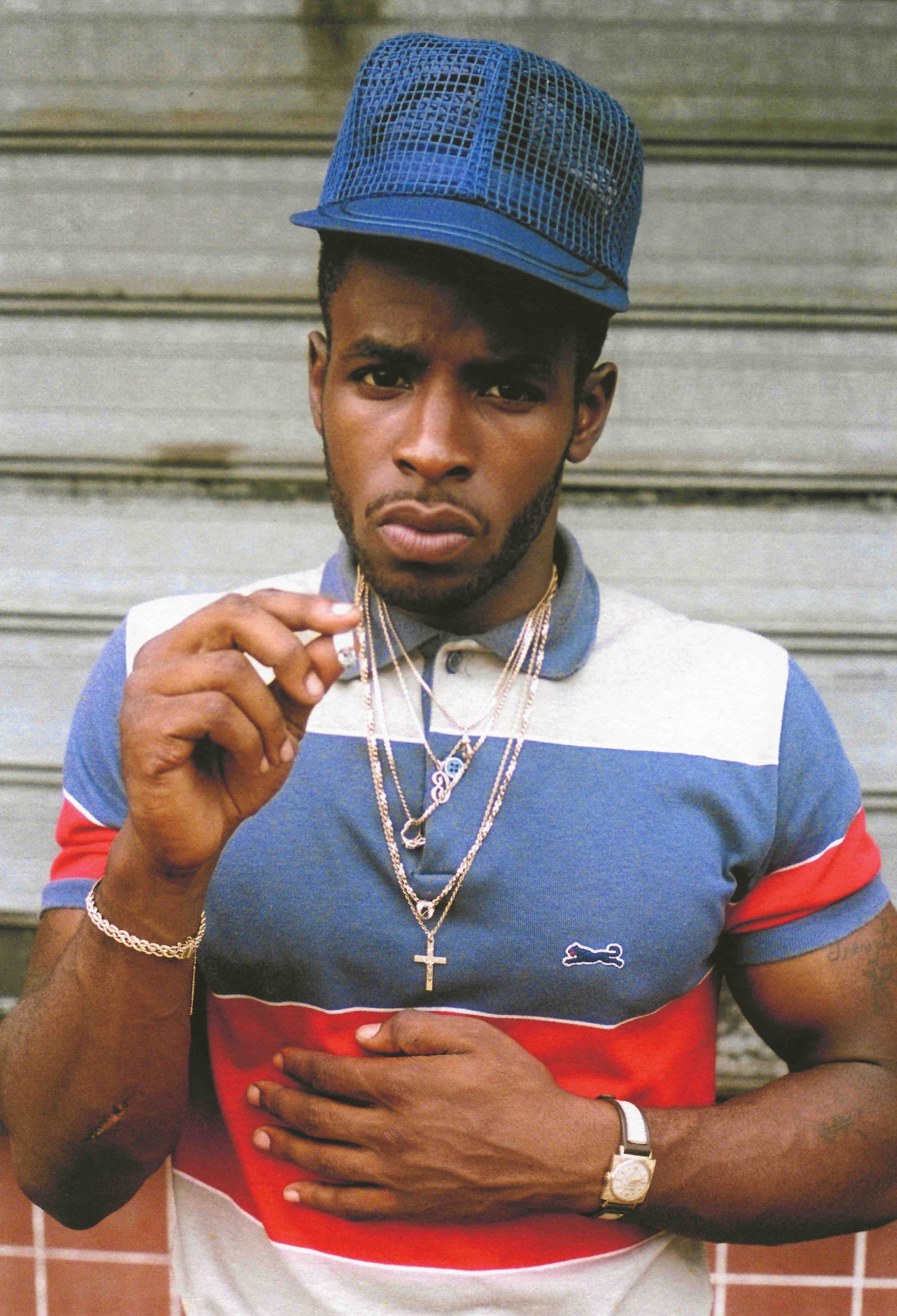Photos of New York’s streets before the rise of crack
- Text by Miss Rosen
- Photography by Jamel Shabazz

Photographer Jamel Shabazz began working as a New York City Correction Officer in 1983 around the same time that crack made landfall and the movie Scarface premiered. “The timing was a perfect recipe for disaster,” he remembers.
Shabazz’s first assignment was in ARDC, popularly known as C74, a housing facility for pretrial detainees between the ages of 16 to 20. “The average inmate count was well over 3,200 on any given day,” he says. “But once crack hit and the war on drugs was in full swing, the count nearly doubled and new facilities had to be built to accommodate the influx in population.”

Fly Girls. Midtown. Circa 1985
Inside the jail, Shabazz was disturbed to see so many people he knew personally from the communities he had been documenting. “Some who were once highly respected had succumbed to crack,” he recalls. “They would see me and try to hide, as they were ashamed and had become mere shells of the men they once were.”
Shabazz describes witnessing “a prey and predatory mindset that caused young men to brutalise each other over nonsense”. Violence escalated, with stabbings, slashing and vicious beatings taking place every single day. “Those who could not bear that type of atmosphere looked to suicide as a form of escape,” he says.

Picture Man, NYC. 1983

Lawrence and Tee, East Flatbush, Brooklyn, 1984
To make matters worse, the administration screened Scarface in the jail’s makeshift theatre every day. “That one movie sowed seeds of suggestions into the minds of those young men, who set up crack operations in their respective neighbourhoods after being released,” Shabazz says. “A number of them would be murdered or rearrested and hit with maximum sentences.”
At the same time, addicts were arrested en masse for possession, many first time offenders and given no treatment or help. Shabazz saw firsthand how the crack epidemic and the war on drugs devastated Black and brown communities during the ‘80s and ‘90s. “Families were uprooted, properties were lost, and innocent children were placed in foster care,” he says.

Trev. Crown Heights, Brooklyn. 1982
Growing up in the 1960s, Shabazz knew there was another way – one rooted in family, community, and collectivity. Inspired by the photography of James Van Der Zee, he set forth to create portraits of dignity and honour that would stand the test of history. “I wanted a visual diary of my personal journey so that when I got older I could look back on my life and the various encounters I had,” he says.
Shabazz returned to his archive to create a powerful and poignant revised edition of the 2005 classic, A Time Before Crack (powerHouse Books). Each portrait has been hand selected to honour those who were lost and those who survived one of the most brutal eras in recent history. Shabazz also brings in Wu-Tang Clans Masta Killa, poet Liza Jessie Peterson, and personal testimonies from former addicts to give voice to the era, sharing their memories and insights.
With the passage of time, Shabazz’s work has taken on greater resonance, as many of his portraits are the last known photographs of those who posed for his camera. Over their years, their children and family members have reached out to Shabazz, forging new bonds through his photographs. As Shabazz puts it: “This experience has given my life a whole new meaning.”

The Red Hook crew. 1981

House of Pain. Rikers Island, 1985

The Brothers. Harlem, 1982
A Time Before Crack is out now on powerHouse Books.
Enjoyed this article? Like Huck on Facebook or follow us on Twitter and Instagram.
Latest on Huck

Analogue Appreciation: lullahush
Ithaca — In an ever more digital, online world, we ask our favourite artists about their most cherished pieces of physical culture. Today, it’s Irish retro-futurist lullahush.
Written by: lullahush

Spyros Rennt captures connection and tenderness among Berlin’s queer youth
Intertwined — In the Greek photographer’s fourth photobook, he lays out spreads of togetherness among his friends and the German capital’s LGBTQ+ party scene.
Written by: Isaac Muk

The rebellious roots of Cornwall’s surfing scene
100 years of waveriding — Despite past attempts to ban the sport from beaches, surfers have remained as integral, conservationist presences in England’s southwestern tip. A new exhibition in Falmouth traces its long history in the area.
Written by: Ella Glossop

Plestia Alaqad: “Journalists should focus on humanising people”
Huck’s April interview — Having become one of the most crucial and followed voices from inside Gaza in the aftermath of October 7, the award-winning author and journalist is releasing a new memoir, ‘The Eyes of Gaza’, collating diary entries made over the past 18 months. We caught up with her to hear more about it.
Written by: Isaac Muk

The instrument makers taking DIY music to a whole new level
What does it take to construct a modular synth? How do you turn a block of wood into a double bass? Here, four craftspeople explain why they chose to rip up the rulebooks and build their own music-making machines.
Written by: Daniel Dylan Wray

Southbank Centre reveals new series dedicated to East and Southeast Asian arts
ESEA Encounters — Taking place between 17-20 July, there will be a live concert from YMO’s Haruomi Hosono, as well as discussions around Asian literature, stage productions, and a pop-up Japanese Yokimono summer market.
Written by: Zahra Onsori